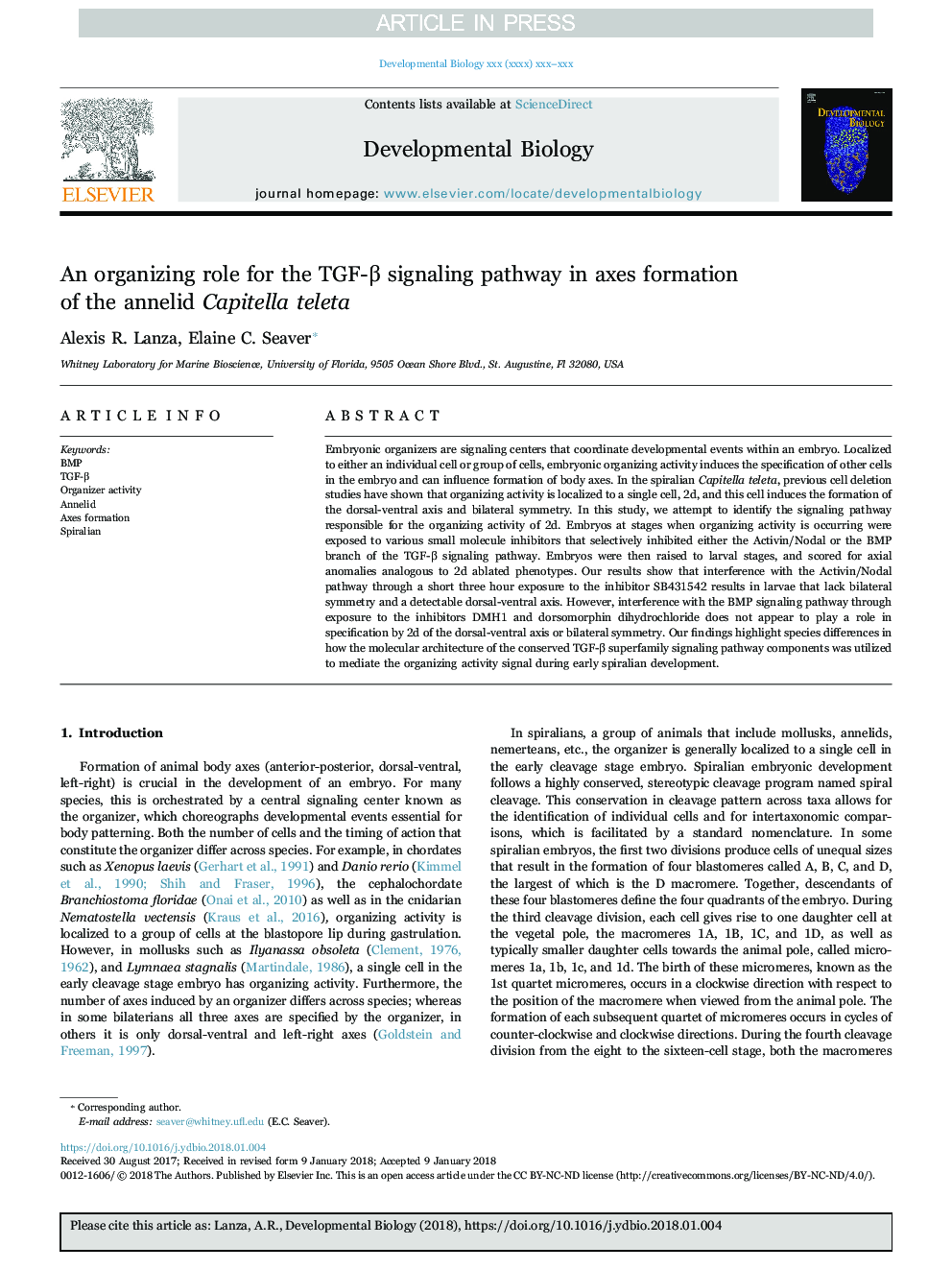| Article ID | Journal | Published Year | Pages | File Type |
|---|---|---|---|---|
| 8467455 | Developmental Biology | 2018 | 15 Pages |
Abstract
Embryonic organizers are signaling centers that coordinate developmental events within an embryo. Localized to either an individual cell or group of cells, embryonic organizing activity induces the specification of other cells in the embryo and can influence formation of body axes. In the spiralian Capitella teleta, previous cell deletion studies have shown that organizing activity is localized to a single cell, 2d, and this cell induces the formation of the dorsal-ventral axis and bilateral symmetry. In this study, we attempt to identify the signaling pathway responsible for the organizing activity of 2d. Embryos at stages when organizing activity is occurring were exposed to various small molecule inhibitors that selectively inhibited either the Activin/Nodal or the BMP branch of the TGF-β signaling pathway. Embryos were then raised to larval stages, and scored for axial anomalies analogous to 2d ablated phenotypes. Our results show that interference with the Activin/Nodal pathway through a short three hour exposure to the inhibitor SB431542 results in larvae that lack bilateral symmetry and a detectable dorsal-ventral axis. However, interference with the BMP signaling pathway through exposure to the inhibitors DMH1 and dorsomorphin dihydrochloride does not appear to play a role in specification by 2d of the dorsal-ventral axis or bilateral symmetry. Our findings highlight species differences in how the molecular architecture of the conserved TGF-β superfamily signaling pathway components was utilized to mediate the organizing activity signal during early spiralian development.
Related Topics
Life Sciences
Biochemistry, Genetics and Molecular Biology
Cell Biology
Authors
Alexis R. Lanza, Elaine C. Seaver,
